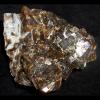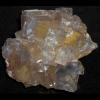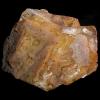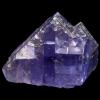130-A18-7
Displaying 1 - 9 of 9
| Catalog # | Name | Description | ||
|---|---|---|---|---|
| 1 | 1994.33.0010 | Fluorite | Color: BR |
 |
| 2 | 1994.33.0011 | Fluorite | Color: GD,CL |
 |
| 3 | 1994.33.0014 | Fluorite | Colorless to yellow, some purple, with inclusions. Color: GD, BR |
 |
| 4 | 1994.33.0015 | Fluorite | Blue, massive, had label "Fluorescent, Clay Center, Ohio." Color: BL |
 |
| 5 | 1994.33.0020 | Fluorite | Purple with yellowish & white encrustation. One crystal shows green cuprous oxidation on its surface. |
 |
| 6 | 1996.16.0015 | Fluorite | Color: WH,GYCL |
 |
| 7 | 2016-11-1 | Copper | A sample of raw copper ore found by the donors dad in Lake Michigan. Often found as distorted masses or extremely distorted crystals. Crystals, which are uncommon, are usually cubic or dodecahedral with modified faces. Octahedral crystals do occur, but are very rare. Also occurs as flattened crystals, scales, dendrites, and wires. This example has a defined crystle structure throught the sample. |
 |
| 8 | 2016-12-1 | Loess Kindchen | Loess Hills Kindchen "Children of the Loess" Formed as rainfall or snowmelt percolates through the loess soil, it dissolves the calcium in the soil. When the calcium rich water reaches a nucleus the calcium carbonate precipitates out, forming a concretion around the nucleus. These concretions commonly are irregularly shaped nodules of calcium carbonate, many of which resemble tiny dolls, hence thier name. |
 |
| 9 | 2016-12-2 | Loess Kindchen | Loess Hills Kindchen "Children of the Loess" Formed as rainfall or snowmelt percolates through the loess soil, it dissolves the calcium in the soil. When the calcium rich water reaches a nucleus the calcium carbonate precipitates out, forming a concretion around the nucleus. These concretions commonly are irregularly shaped nodules of calcium carbonate, many of which resemble tiny dolls, hence thier name. |
 |
